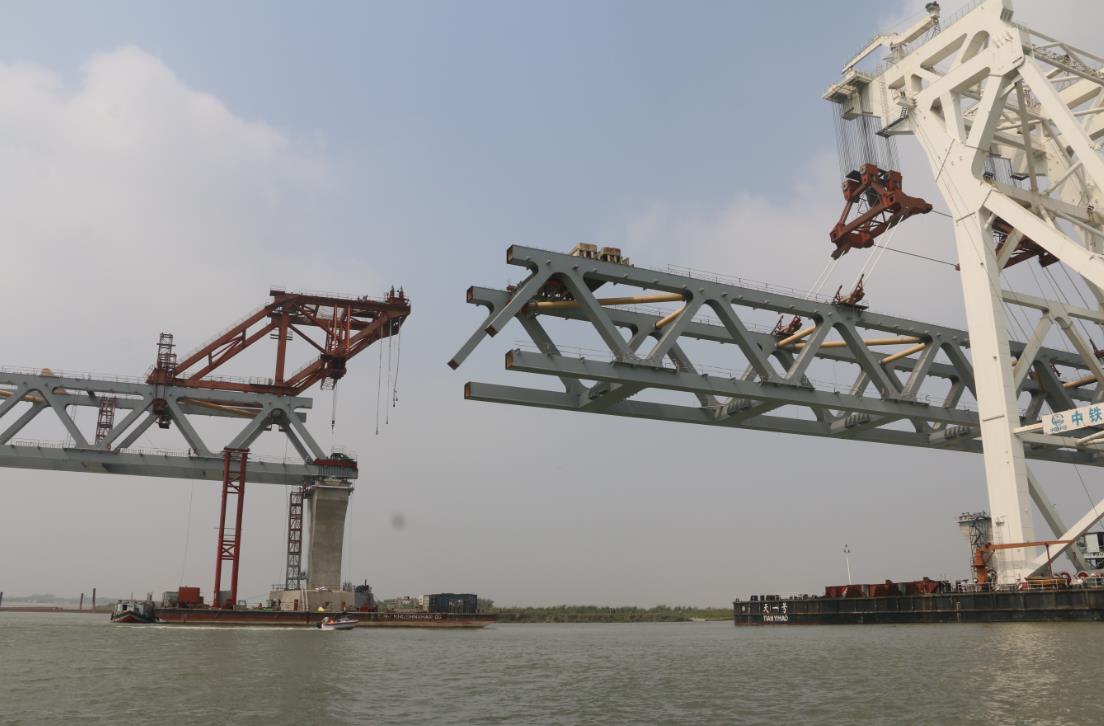Chinese firm progressing with Padma Bridge project

The Padma Bridge project, a major project across the Padma River in Bangladesh, which is being built with Chinese cooperation. (Xinhua)
Steel piling work on the $3.12 billion Padma Bridge project, a multipurpose road-rail bridge across the Padma River in Bangladesh, was completed recently and the bridge is expected to be opened by 2022, according to a Chinese contractor working on the project.
The milestone marks an important progress in the construction of the two-level steel truss bridge, as the construction was often challenged by severe weather conditions like storms. The soft riverbed filled with silt and sand also made the construction challenging as it had higher requirements for stability.
According to the Wuhan-based China Railway Major Bridge Engineering Group Co Ltd, the bridge construction used some of the world's top-level equipment for hammering. The team also invented new technologies to increase steel pipes' carrying capacity, and designs to enhance the overall stability.
The construction was much harder than expected and many construction plans at certain phases even came out days before being put into action, said Shen Tao, deputy general manager of the project.
Upon completion, the bridge will have two levels, with the upper tier having a four-lane highway and the lower tier a single track railway. The 6.15-kilometer bridge will connect southwestern Bangladesh's 21 districts with the country's capital Dhaka, and become a vital link between southwest Bangladesh and the northeast of the country.
According to project manager Liu Jianhua, the completion of the Padma Bridge project will strengthen economic ties between the southwest and the northeast regions of Bangladesh.
"The bridge is likely to become an important trade artery linking southwest Bangladesh and the northeast of the country, and also a valuable addition to the current shipping routes," Liu said.
Till now, goods are mainly transported between southern and northern Bangladesh via shipping.
Md Shafiqul Islam, a director of the project, said the bridge will offer an alternative and important way of transportation aside from shipping, and the connection will facilitate trade and economic development, especially in less developed areas.
According to news reports from Bangladesh, the bridge is expected to boost the local GDP by 1.2 percent when completed. The project has already created over 5,000 jobs for local people, according to China Railway Major Bridge Engineering Group.
Wang Xiaosong, a professor in economics at Renmin University of China, said the project is likely to become a vital transportation artery for Bangladesh, and marks an important part of State-owned companies' contributions to the Belt and Road Initiative.
- Center for China Studies of Dhaka University inaugurated
- GLOBALink | Chinese-built solar power plant shines in northern Bangladesh
- GLOBALink | Bangladesh embraces wind energy with Chinese solutions
- China donates smart classroom to Bangladesh
- 1st Confucius classroom officially inaugurated in Bangladesh

